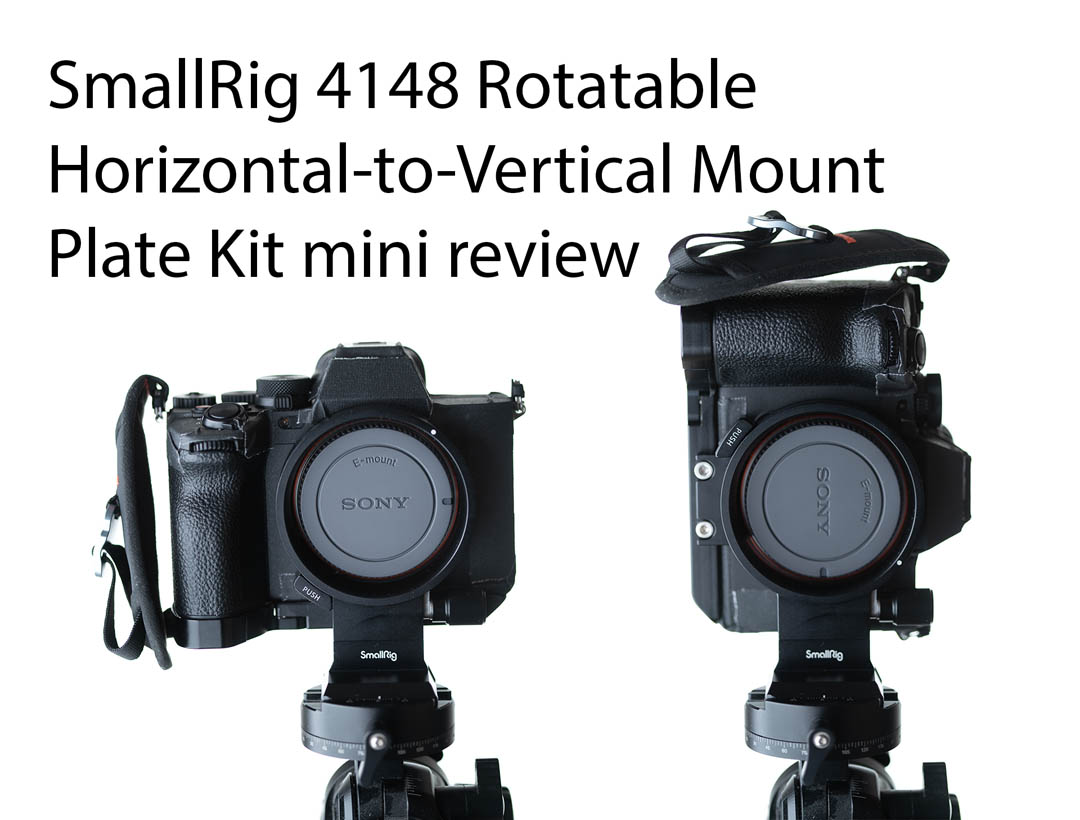
I recently purchased a SmallRig 4148, or as it is named on the box SmallRig Rotatable Horizontal-to-Vertical Mount Plate Kit for Sony Alpha 7RV / Alpha 7 IV / Alpha 7S III / Alpha 7R IV
. I haven't actually used it much, but I thought I'd put out a quick review in case it helps anyone else decide if this will work for them or not.
There's a few reasons why I purchased this adapter:
- It makes going from landscape to portrait and vice versa when tripod mounted much quicker than using a L plate. No unlocking the QR clamp, removing the camera, switching the orientation and re-locking the clamp. Just rotate the camera in the collar. (Well, okay, you would have to unlock and re-lock the collar if you use the lock on it).
- Because there's no vertical section of the bracket, you don't have to deal with it getting in the way of plugging things into the side of the camera.
- And the main one for me was the hope I could use it with my old Nodal Ninja 3 pano head and a fisheye lens, without the need for a separate lens ring.
The kit comes as two parts - a base plate you fit to the camera, then the ring section, which screws into the base plate. A 3mm allen key is also included, which you need to screw the ring section into the front edge of the base plate.
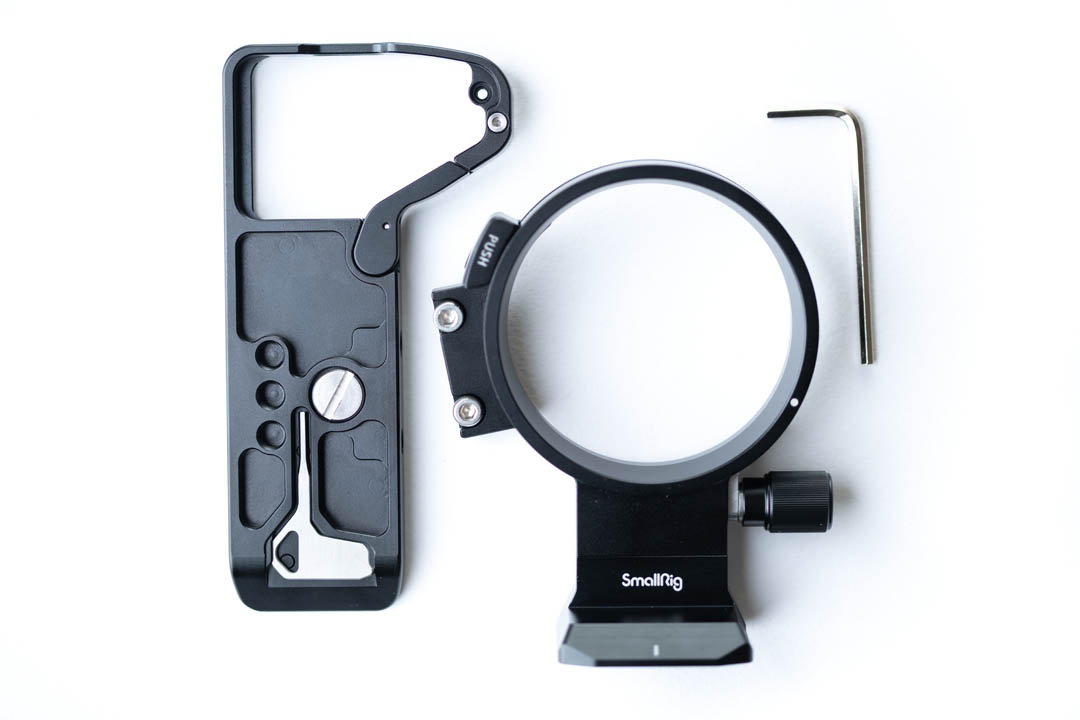
What's included with the kit
Interestingly, the plate is quite different to the one on the SmallRig L bracket. It does feature the same nice battery door section though that will let you easily replace the camera battery without having to remove the plate. And a strap hole for attaching a strap.
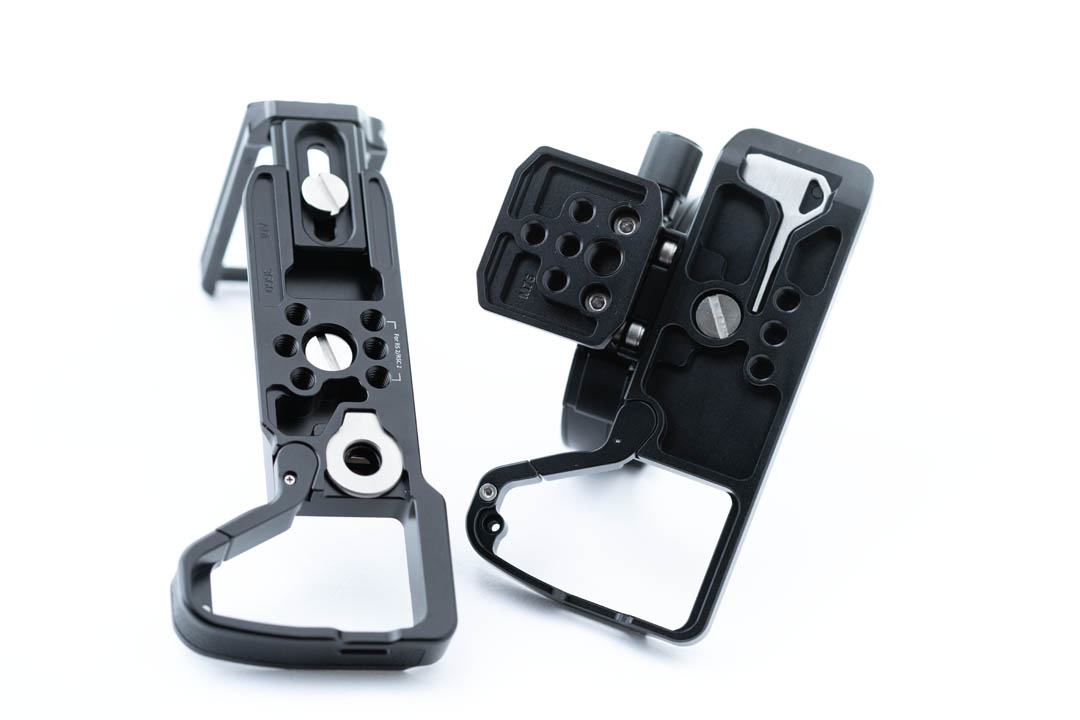
Comparison of the SmallRig 3660 L-Bracket (left) and 4148 Rotatable mount plate (right)
The foot of the adapter is a QR plate, both Arca-Swiss and Manfrotto RC2 compatible. The Arca-Swiss compatibility is very important to me as this is the QR system I use.
The ring rotates 90°, so you can have the camera landscape or vertical. But you can't rotate the camera 180° so it is upside down. Or 270° so the grip is facing down. On the A7IV, if you have an HDMI cable plugged in, and depending on your QR clamp, you may not be able to fully rotate the camera to portrait orientation.
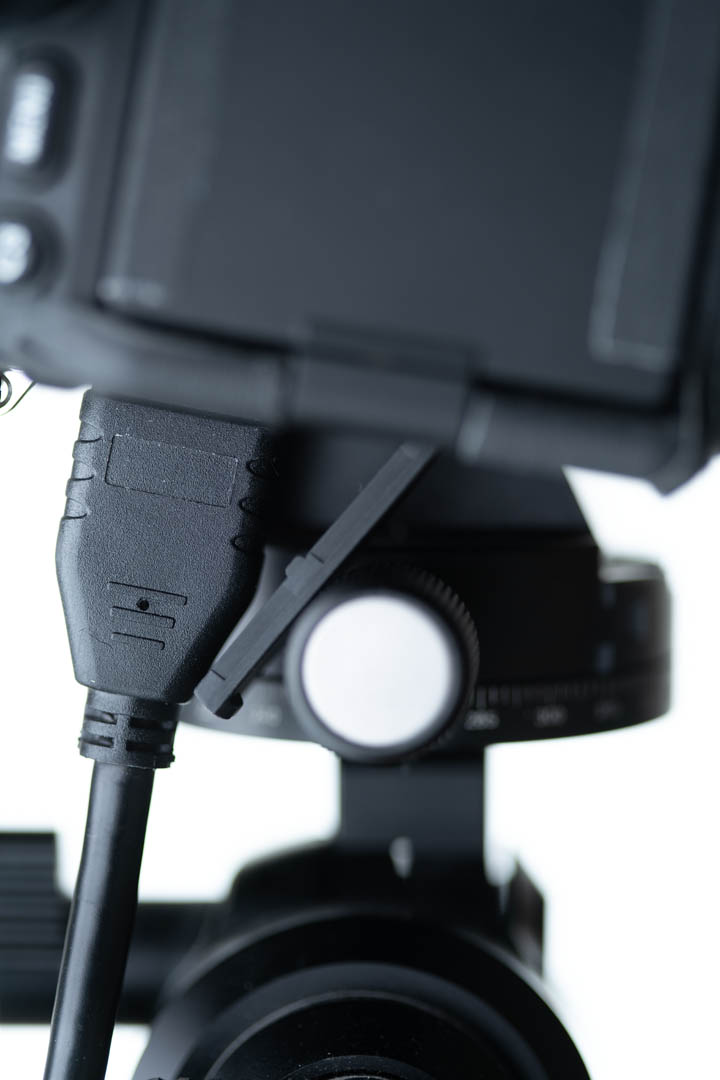
The combination of the HDMI cable and port flap on the camera foul on the QR clamp knob and prevent fully rotating the camera 90° to portrait orientation.
The adapter features a lens release button that you use to release the lens, since it covers up the lens release button on the camera. Unfortunately tolerances don't seem quite right. On initial mounting, the lens release button of the adapter scratched the lens mount. I had to add some tape on the bottom of the camera to make it so the adapter would be 0.5mm or so lower, enough to clear the outside of the lens mount.
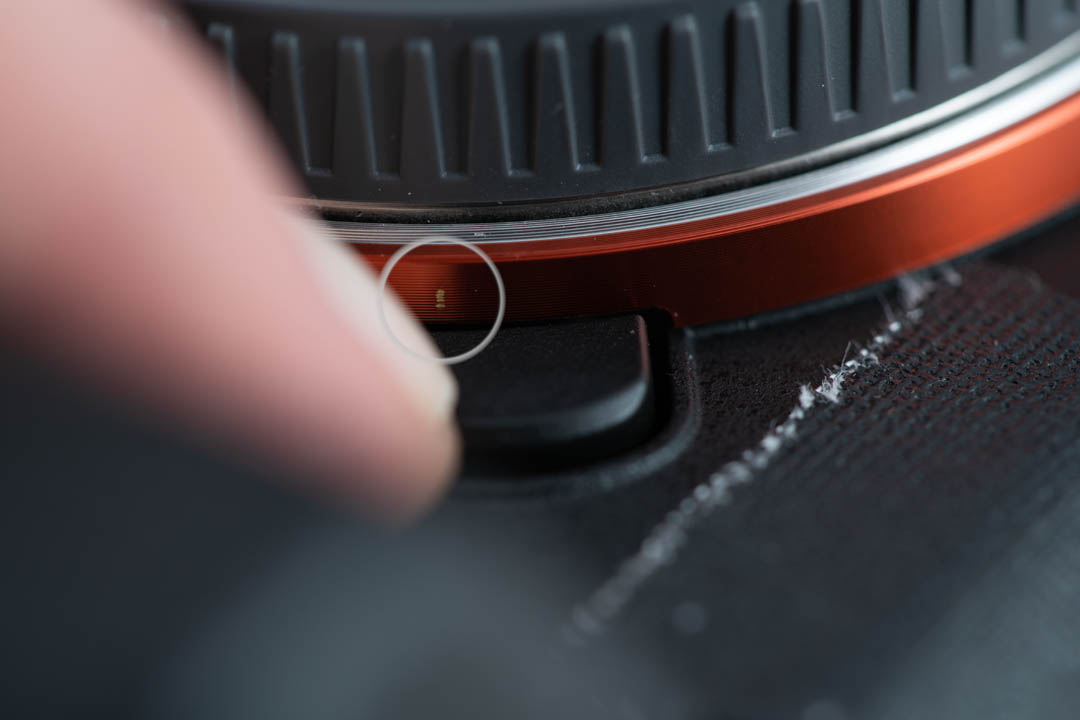
Scratch on the camera's lens mount caused by the lens release button actuator on the SmallRig rotator ring.
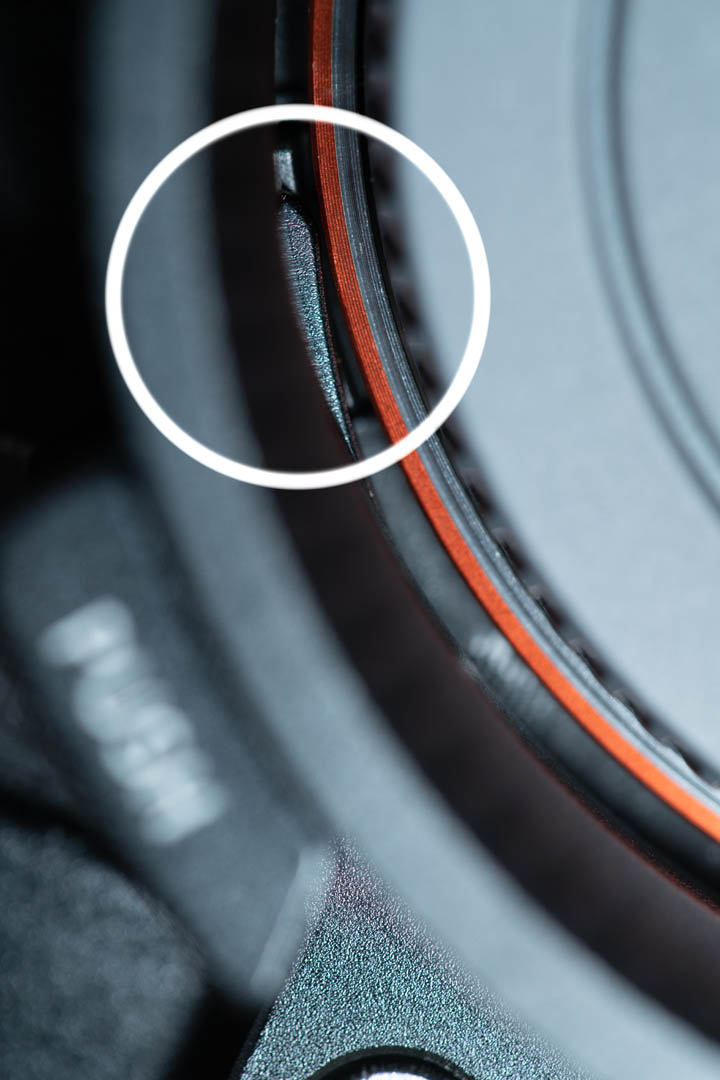
Area between the inside of the rotator ring and the lens mount, showing how little clearance there is between the ring's lens release button mechanism and the camera mount.
There is a tool in the bottom of the plate that can be used to screw / unscrew the plate from the camera. One end of the tool has a small 2mm allen key that can be used for screwing / unscrewing the anti-twist pin. In my opinion this would be more useful if it had a 3mm allen key, the same size as needed for tightening the screws that attach the ring part to the plate. The tool is held in place on the bottom of the plate with small magnets.
Removing / re-attaching the body mount cap isn't that easy when the rotator ring is attached, as it is difficult to get a good hold on the cap when you can't get your fingers round the edge of it. I looked online to see if you could get body caps with a pinch style grip in the center, but suprisingly couldn't find any. Taking a body cap and gluing something smaller like a bottle cap in the center should make it a lot easier to grip and remove / put back.
The main issue I have with the device is the lack of compatibility with lens adaptors. My Sony FE mount lenses - Sony Zeiss 35mm/2.8, Sony 28-70mm/3.5-5.6, Sony 28mm/2, Sony Zeiss 50mm/1.8, and Sigma 24-70mm/2.8 all mounted okay. But none of my adapters to other mounts would fit as the ring sticks out too much and hits into the lens release button on the adapters.
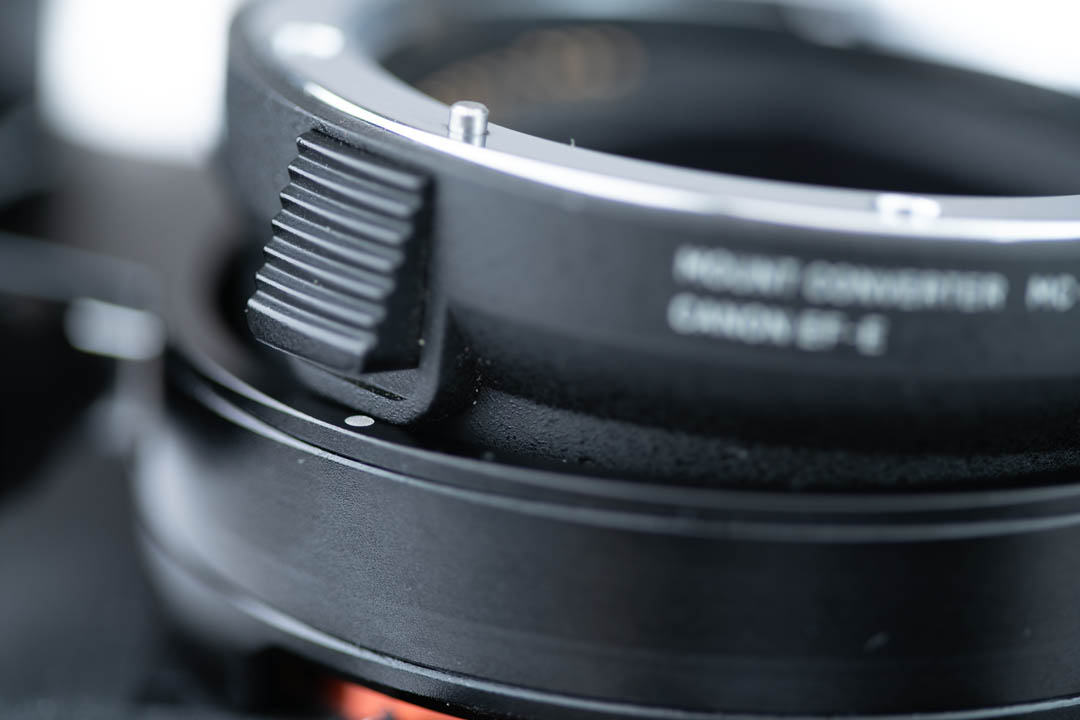
The lens release button on the adapter sticks out too much to fit inside the rotator ring.
I was really hoping I could use this with my Canon 8-15mm fisheye, but unfortunately that's just not possible. (I tried both the Sigma MC-11 and a basic no electronic contacts EF mount adapter).
You would need to remove the entire plate from the camera each time you wanted to use an adapted lens, which isn't very convenient. If you shoot with only Sony E mount lenses, I don't think you'd have any problem with the device. But for me, where I use various adapted lenses, it doesn't really work.
I don't think this a design flaw though. The ring sits very close to the camera grip as it is, they couldn't really make it any larger diameter or your finger wouldn't be able to fit round the grip.
Possibly the ring could be a bit shorter in depth (this wouldn't help with short flange mount adapters like Leica M but would with longer ones like Canon EF and Nikon F). But then it likely wouldn't be as strong and more liable to bend or snap.

Hi very helpful article!! I have sigma mc 11 so I can’t use with this? Thanks.
Sadly Sigma MC-11 is not compatible, it won’t fit.
Excellent and very helpful article.
Thank you!
I purchased mine in October and initially, I was quite fond of its functionality. However, after some time, I encountered issues with its durability, particularly with the construction of the ring connection. The ring lock, designed to secure the camera in place, failed. This issue appears to stem from the construction of the connection between the two rings, which relies on small grooves that seem not to be very sturdy. As a result, the two rings of the device separated, leaving the camera and lens dangling from the ring connected to the tripod. While the lens/camera usually remains within the ring attached to the tripod for most lenses, the two rings can be reconnected but are prone to separating again with even minor movements. This design flaw renders the device effectively unusable.